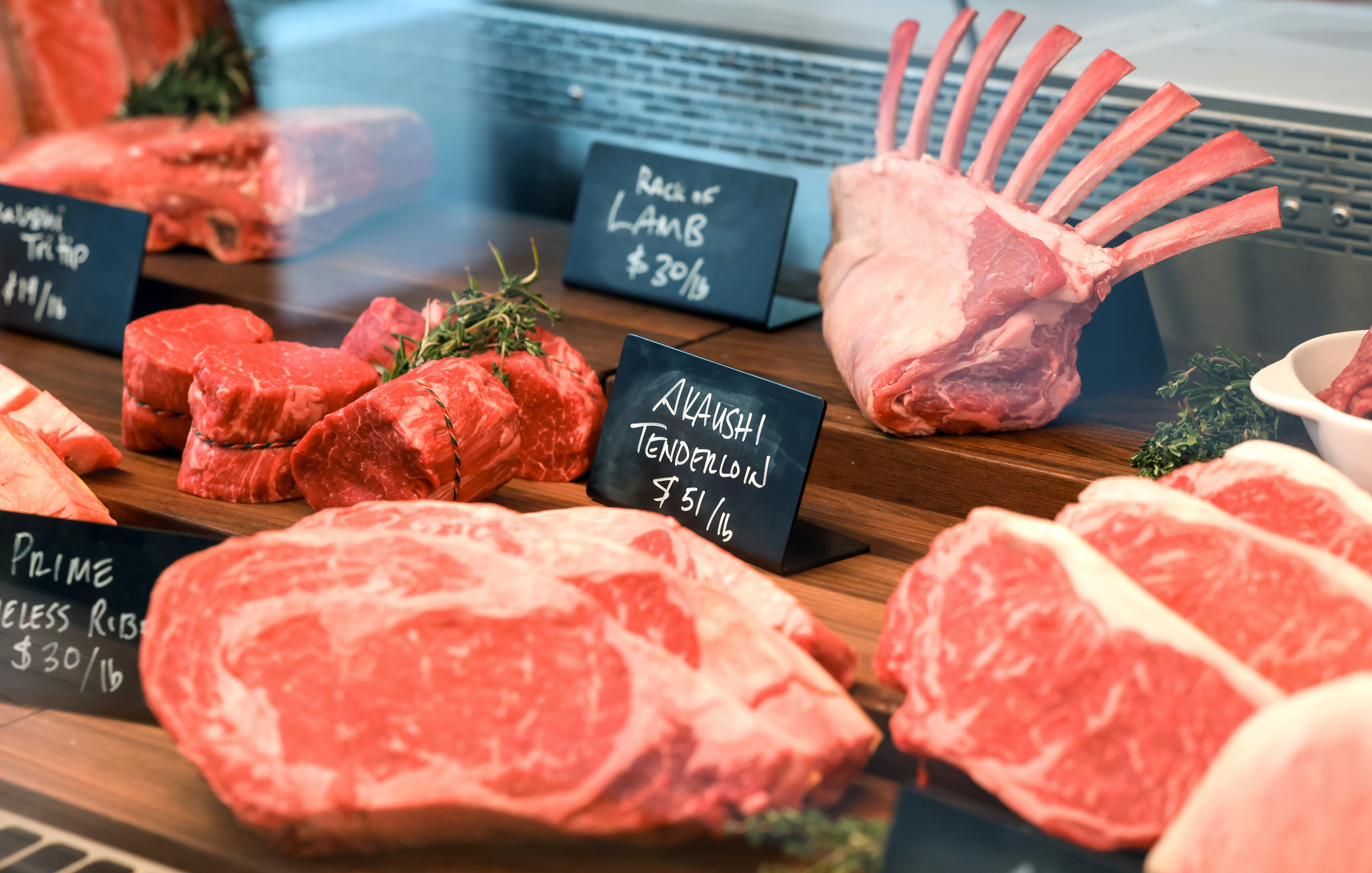Bagley Farms Meat Market Edwardsville IL: Your Relied On Resource for High-Quality Meats
Bagley Farms Meat Market Edwardsville IL: Your Relied On Resource for High-Quality Meats
Blog Article
Uncover the Art of the Butcher's Cut in a Modern Meat Market
In the ever-evolving landscape of contemporary meat markets, the butcher's cut has actually transcended its typical roots, merging old-time craftsmanship with contemporary techniques. Today's butchers are not simply processors of meat; they are well-informed craftsmens who emphasize sustainability and ethical sourcing. Their competence in choose and preparing cuts tailored to certain cooking needs supplies an unmatched eating experience. What really sets the modern-day butcher apart is their capacity to build a much deeper link in between customers and the beginnings of their meat. Exactly how do these masters balance tradition with technology, and what implications does this have for the future of meat consumption?
Development of Butchery Methods
The advancement of butchery techniques mirrors an abundant tapestry of advancement and adaptation driven by innovations in modern technology, adjustments in customer need, and a much deeper understanding of meat science. Historically, butchery was a craft gave with generations, with approaches developed over centuries to optimize yield and flavor. The industrial revolution ushered in mechanization, transforming typical practices and enabling massive handling.
The mid-20th century saw butchery techniques further improved by scientific understandings into muscle mass biology and meat aging, boosting both inflammation and preference. Advancements like vacuum cleaner product packaging and refrigeration prolonged product shelf-life, allowing butchers to expand offerings and improve quality assurance. This duration additionally marked the increase of specialized devices, such as band saws and meat slicers, which increased accuracy and effectiveness in meat processing.

Computerized systems now aid in monitoring pet provenance and optimizing cuts to meet particular consumer choices. In addition, a rebirth in artisanal butchery has emerged, mixing conventional abilities with modern understanding to provide to customers seeking moral and lasting meat options.
Understanding Meat Cuts
Recognizing the details of meat cuts is necessary for both butchers and consumers seeking high quality and value. Each cut originates from a different part of the pet, passing on one-of-a-kind tastes, textures, and food preparation methods - bagley farms meat market edwardsville il. Proficiency of these differences not just enhances cooking experiences however additionally makes the most of the energy of each carcass. For butchers, accurate cuts mirror skill and regard for the craft, guaranteeing marginal waste and optimal return.

Understanding muscular tissue make-up is vital; muscle mass utilized more regularly by the animal tend to be harder and are our website best fit for slow food preparation techniques, while less-used muscle mass, like those found in the loin, are extra tender and suitable for grilling or roasting. Knowledge with these differences empowers customers to make educated choices, boosting their cooking endeavors.
Choosing Top Quality Meat
Choosing the ideal meat entails more than just selecting a visually attractive piece from the display. The art of choosing top quality meat requires a critical eye and expertise of particular features that signify freshness and quality.
Secondly, think about the marbling, which describes the white streaks of fat within the muscle. Appropriate marbling is a key indication of tenderness and taste, as it thaws throughout food preparation, enhancing the meat's juiciness. Bear in mind, greater marbling frequently correlates with exceptional quality cuts, such as USDA Prime.
Texture is an additional critical factor; meat should really feel solid to the touch, not slimy or extremely soft. In addition, bear in mind the scent. Fresh meat should have a tidy, neutral odor, devoid of any sour or off-putting smells.
Combining Cuts With Food Preparation Techniques

On the other hand, tougher cuts like brisket and chuck roast are rich in collagen, which breaks down into jelly when prepared gradually. These cuts are ideal for braising or slow roasting, permitting the meat to tenderize over time and develop deep, complex flavors. Cuts such as brief ribs and pork shoulder make out well with slow-cooking methods, where expanded cooking times transform their robust appearances right into succulent recipes.
Lamb shanks and oxtail, which call for prolonged food preparation to tenderize, are ideal candidates for stewing or slow simmering. These methods coax out abundant, hearty tastes while maintaining dampness. By recognizing the special characteristics of each cut, cooks and home chefs alike can boost Read Full Report their cooking developments, making sure each meal is both satisfying and unforgettable.
The Butcher's Role Today
Navigating the advancing landscape of the modern-day meat market, the butcher's duty today prolongs past mere prep work of cuts. Contemporary butchers are cooking artisans, educators, and advocates for sustainable techniques. They connect the void between the farm and the fork by ensuring honest sourcing, understanding pet husbandry, and prioritizing transparency in the supply chain. This change reflects the expanding customer demand for quality over quantity, where provenance and animal welfare are vital.
In enhancement to crafting specific cuts, butchers now involve directly with clients, providing cooking recommendations and tailoring options to fit private needs and preferences. Their knowledge in meat aging, marbling, and taste profiles equips consumers to make enlightened choices, enhancing their cooking experiences. This personalized service exhibits the butcher's progressing role as a relied on expert in the kitchen area.
In addition, butchers are critical in lessening waste, using entire animals to produce diverse products such as sausages and stocks. This thorough approach not only appreciates the animal yet likewise straightens with contemporary sustainability objectives. By doing this, the modern-day butcher embodies both tradition and innovation, adapting to an ever-changing market while protecting the artistry and stability of their craft.
Final Thought
Mastery in understanding varied meat cuts and high quality signs empowers butchers to supply enlightened referrals, straightening certain cuts with optimal cooking techniques. By honoring historic methods while welcoming modern needs, the butcher's role continues to be vital in today's innovative meat market.
Report this page